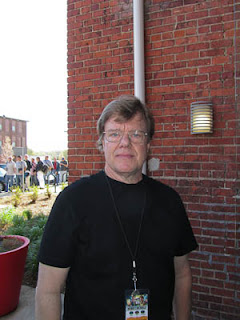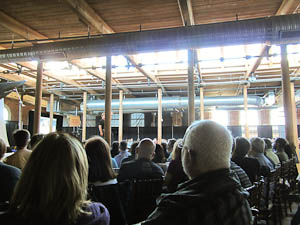Without giving all my notes -
FROM Hobby (yeah, a little blurred. These two never stop moving, especially the hands) - Ambient is your ground floor. It what you have no matter what. You build lighting based upon it. The picture won't get any darker than ambient so take an initial shot at the shutter and aperture you want to use and get your ambient setting. Adjust setting as necessary. (The idea is to not have to Photoshop i a photo but get it right to start with).
Use the picture on the LCD screen in the back of the camera to see relationships of lighting and contrast. Use the histogram (that funky graph most cameras have) to see if you are clipping off at either end of the light spectrum. (Note from me - If you are shooting something against a large dark or a large bright background, you will have clipping (the graph against the end of the chart), expect it. Back to Hobby).
Sometimes you don't want the light pointed at the object but slicing past it to glance off of it.
A lot of discussion on umbrellas vs softboxes. Seems the future is going softboxes. (Easier to carry and less fragile among other things).
BIG POINT - LET GO OF ABSOLUTE PERFECTION! Especially if you only have one light (other than ambient). I agree. Yo can drive your self nuts going for the perfect photo. Hobby showed photos we thought were fine but then he started picking at his own work. We thought they were fine anyway.
A big difference between Hobby and McNalley - Hobby sets his flash to manual and uses TTL (Through the Lens Metering) if necessary. McNalley uses TTL and goes to manual if necessary.
Another thing I learned - Canon folks can only use TTL on all flashes or manual setting mode on all flashes. Nikon folks can set one group of flashes to manual and another group to TTL! Some of the Canon folks there were amazing once they understood what was happening! BTW McNalley and Hobby are both Nikon folks.
 FROM McNalley - When you go on a shoot, expect things to be difference that what you were told or what you anticipated or planned on, they will be different.
FROM McNalley - When you go on a shoot, expect things to be difference that what you were told or what you anticipated or planned on, they will be different.Flash lighting should be invisible to the person looking at the photo. They should never say "What great flash" but rather "What a great photo."
When using lighting, remember that the apparent size is critical. The sun is fairly small from our perspective. That's why the lighting can be so harsh in the daytime and why outdoor photographers try to shoot 45 minutes before and after sunrise and sunset. Larger light is better light. That is why photographers put those umbrellas right up near you, it makes the light appear to be larger than thus softer.
Watch out for really dark or really bright background when using TTL.
Start with a shot at no compensations and then add or reduce the settings on your camera and flash separately.
Remember that the flash affects the subject primarily. Ambient light affects the background. A long shutter speed will brighten up the background. Adjusting the shutter does not affect the flash as the flash only lasts 1/1000 of a second and most cameras will not synch faster than 1/250 of a second.
Big thing out of all this beside the technical stuff. New ideas to play and experiment with. If you have a chance to go - GO!
This is the food line at one of four food trucks after 30 minutes!
The view behind me.
The infamous Flash Bus.
The view looking up the stairs going to the meeting.
A little tighter view. I loved the old wood and brick.
Of course if you take a shot looking up from the bottom, you have to get a shot looking down from the top. Wish I had leaned out a little further from the edge. (My wife's secret voice in my head stopped me.)
Another view from the bottom of the stairs.

And the subject is about controlling light!! I bet Hobby and McNalley passed out when they was the room they had was not only full of windows on the sides but the roof was also! Hard to demo things with that much light. McNalley commented that when a client offers to turn on the lights, he tells them no, its better with the lights off. (Remember, ambient is the base you work with. You can always add more but you can't take away.)
Note the curtains on the left trying to reduce the light.
Jedi Master McNalley hard at work.










No comments:
Post a Comment